[pdfjs-viewer url=”https%3A%2F%2Fbipinadhikari.com.np%2Fwp-content%2Fuploads%2F2018%2F05%2Fwidheyak_samiksha_NCF.pdf” viewer_width=100% viewer_height=1360px fullscreen=true download=true print=true]
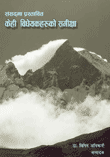

[pdfjs-viewer url=”https%3A%2F%2Fbipinadhikari.com.np%2Fwp-content%2Fuploads%2F2018%2F05%2Fwidheyak_samiksha_NCF.pdf” viewer_width=100% viewer_height=1360px fullscreen=true download=true print=true]
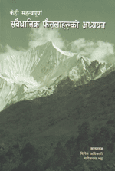
मन्तव्य
प्रस्तुत पुस्तक केही महत्वपूर्ण संवैधानिक फैसलाहरुको अध्ययन सर्वोच्च अदालतबाट हालैका वर्षहरुमा गरिएका आठवटा संवैधानिक फैसला एवम् ती फैसलहरुमा प्रतिपादित सिद्धान्तहरुको समीक्षा हो ।
यसमा संविधानसभाको म्याद थप सम्बन्धमा परेको रिट निवेदनमा सर्वोच्च अदालतबाट भएका विभिन्न निर्णयहरुको संक्षिप्त पुनरावलोकनदेखि लिएर प्राकृतिक स्रोतमा नेपाल सरकारको हैसियत सर्वेसर्वा नभई केवल ट्रष्टिसम्मको मात्र हुने र यस अर्थमा सरकारले वातावरणमा प्रतिकूल प्रभाव पार्नेगरी कसैलाई कुनै कार्य गर्न दिन नहुने भन्नेसम्मको ठहरको चिरफार गरिएको छ । यी फैसलाहरुलाई विभिन्न कानुनविद्हरुबाट विश्लेषण गरिएको छ । सोमध्ये केही कानुन व्यवसायी हुनुहुन्छ भने केही कानुन शिक्षणसँग सम्बन्धित विज्ञहरु हुनुहुन्छ ।
यस पुस्तकलाई सर्सर्ती हेर्ने जोसुकैले पनि यहाँ सम्मिलित सबै फैसलाहरुको अलग–अलग दृष्टिकोणबाट अध्ययन गरिएको देख्न सक्दछ । वस्तुतः कानुन पेशामा संलग्न व्यवसायीहरुले विवादग्रस्त कानुनी र संवैधानिक विषयहरुमा गर्ने व्याख्या एवम् सोका लागि लिइने सैद्धान्तिक आधारहरु बीच मत–मतान्तर देखिनु सामान्य नै हो । तर अन्ततः सर्वोच्च अदालतले गरिदिएको व्याख्या एवम् प्रतिपादन गरेको सिद्धान्तले नै अन्तिम अख्तियारी पाउँदछ । यस्ता व्याख्याहरुमा जबसम्म संविधान वा कानुन संशोधनको माध्यमबाट वैध रुपमा परिवर्तन गरिँदैनन्, वा सर्वोच्च अदालतले नै उपयुक्त समयमा पुनर्विचार वा पुनव्र्याख्या गर्दैन, तबसम्म त्यस्ता सिद्धान्तहरु कायमै रहन्छन् । तिनलाई समालोचना गरेर फैसलाको स्तर वृद्धि वा सैद्धान्तिक रुपमा त्यसलाई परिष्कृत गर्ने प्रयास प्राज्ञिक क्षेत्रको उत्तरदायित्व हो । समीक्षात्मक अध्ययन एवम् अनुसन्धानको माध्यमबाट त्यस्ता प्रयासहरुलाई सहयोग गरिने दृष्टान्तहरु सबै कमन ल प्रणाली भएका मुलुकहरुमा पाइन्छ । हाम्रै देशमा पनि यदाकदा यसतर्फ प्रयास नभएका होइनन् । त्यस्तो अध्ययन एवम् अनुसन्धानले सर्वोच्च अदालतसहित सम्बद्ध सबै पक्षलाई उचित परिस्थितिमा उचित प्रक्रिया बमोजिम आफूले स्थापित गरेको सिद्धान्तहरुलाई पुनर्लेखन वा परिमार्जन गर्ने अवसर प्रदान गर्दछ । त्यसैले यस प्रकारको अध्ययन एवम् तिनको प्रकाशनले निरन्तरता पाउनु जरुरी छ ।
यस पृष्ठभूमिमा यो पुस्तकका सम्पादकद्वय डा. विपिन अधिकारी तथा सहप्राध्यापक गणेशदत्त भट्टलाई केही महत्वपूर्ण संवैधानिक फैसलाहरुको अध्ययन प्रकाशन गर्न लाग्नुभएकोमा धन्यवाद दिन चाहन्छु । नेपाल कन्स्टिट्युसन फाउण्डेसनबाट भविष्यमा पनि यस प्रकारका प्रयासहरुले निरन्तरता पाउन् भन्ने मेरो शुभेच्छा छ ।
डा. सूर्य ढुंगेल
वि.सं. २०६९ साउन १५
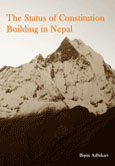
Foreword by Manohar Prasad Bhattarai
Nepal is likely to complete its nearly four-year long constitution drafting process by 27 May 2012. The Constituent Assembly will have to engage deeply in a variety of issues to meet this deadline established by Article 64 of the Interim Constitution. As in any transitional country, the challenges of participatory constitution drafting are enormous. Since 28 May 2008, when the first meeting of the Constituent Assembly took place, the country has been discussing democracy, social justice, federalism, devolution of power, and the rights of minorities and indigenous people. In the course of these conversations, Nepal has studied the experiences of other countries, taking advantage of the considerable knowledge on comparative experiences in constitution building. This has enabled nuanced debates on issues which do not appear complicated at first glance.

The constitution drafting process in any nation must consist of inclusive and participatory deliberations resulting in agreements establishing the fundamental law of the land. Identifying the fundamental values and institutional preferences of the people is a crucial task. Equally important, however, are negotiations between different parties, sectors and interests in the national context. In this sense, the political process in Nepal is no longer an elite exercise. As frequently highlighted by Subash C. Nemwang, chairperson of the Constituent Assembly, the final agreement on the constitutional arrangement must be satisfactory to all the stakeholders within the country. Indeed, the Constituent Assembly has already fulfilled many of its duties, reaching settlements on a plethora of issues. At this final stage, the active and serious engagement of the political leadership is required to complete the process.
This work by Bipin Adhikari is a brief study of the functioning of the Constituent Assembly as well as the nature of the remaining tasks of constitution building. Beginning with the opening of the Constituent Assembly on 28 May 2008, these pages review the activities of the constituent body over the past 46 months. Outlining the preliminary groundwork, this retrospective covers the efforts to collect public opinion and recommendations, the deliberations and reports of the thematic committees, emerging constitutional issues, and crucial areas of dispute awaiting settlements. There are discussions of the three central disputed issues: form of government, federalism, and the electoral system. In this context, Adhikari highlights the work of the Dispute Resolution Sub-Committee under the Constitutional Committee of the CA and the recent reports of the State Restructuring Commission.
Commenting on the disagreements in drafting the constitution, Adhikari is of the view that lack of vision as well as of credible leadership has hampered the process. Nonetheless, there are ideological differences between different political parties on several constitutional issues. For instance, there is disagreement on core issues of constitutional supremacy, government accountability, and the rule of law. At every stage of the process, the ideological position of the ruling party has comprehensively impacted the Assembly. In this sense, the delays are more a result of the beleaguered peace process than of technical\legal constitutional issues. This is an important point to remember as the new constitution is being drafted in the context of the peace process. The 21 November 2006 Comprehensive Peace Accord concluded between the Government of Nepal and the CPN (Maoist) and the 8 December 2006 Agreement on Monitoring of the Management of Arms and Armies form part of the Interim Constitution. If the chance of institutionalized peace is bleak, Adhikari believes that some of the major parties would lose the motivation to draft the new democratic constitution. He also maintains that the contents of the draft constitution will be carefully reviewed by Nepal’s powerful neighbours.
It will be evident to readers that Adhikari does not dwell on the political aspects of the major controversies at the Constituent Assembly. The challenges of handling the demands of the 2006 People’s Movement, the preceding insurgency, the emergence of identity politics, the cultural and national foundations of the state, and discussions on social transformation are not addressed here. Similarly, Adhikari does not talk about managing the transition in the post-constitution scenario, an issue he has discussed in depth elsewhere. These omissions are deliberate as this work is generally aimed at recapping what has been achieved and what remains. Indeed, there is a dire need for a work of this kind which can function as reference material for legal experts, law makers, scholars and the general public. I believe that this publication helps fill the existing vacuum.
Bipin Adhikari needs no introduction to readers interested in Nepal’s constitutional development, parliamentary process and the legal system. A senior constitutional expert, he has extensively written and spoken on issues of constitutional concern. As a constitutional expert working very closely with lawmakers in the Constituent Assembly, he is deeply aware of the discussions and considerations influencing decisions since May 2008. I am confident that this publication will be of much use to the public, especially professionals, civil society members and the international community working in Nepal. It will also positively impact the ongoing constitution building process.
Manohar Prasad Bhattarai
Secretary General
The Constituent Assembly of Nepal
27 March 2012
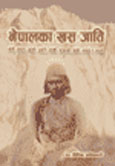

Preface – Werner Thut, Vice President, Forum of Federations, Ottawa, July 2011
Excerpt: The study titled Transition to Federalism in Nepal: Lessons from Comparative Processes in Spain, South Africa and Ethiopia was produced by the Forum of Federations as part of its Nepal program… The program’s activities included a two-day conference … … held in Kathmandu, Nepal, on October 27-28, 2010… Through a comparative approach the Forum hopes to contribute to a debate about how a vision of a federal Nepal can be turned into reality.
Comparative Processes in Spain, South Africa and Ethiopia was produced by the Forum of Federations as part of its Nepal program… The program’s activities included a two-day conference … … held in Kathmandu, Nepal, on October 27-28, 2010… Through a comparative approach the Forum hopes to contribute to a debate about how a vision of a federal Nepal can be turned into reality.
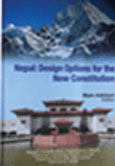
[pdfjs-viewer url=”https%3A%2F%2Fbipinadhikari.com.np%2Fwp-content%2Fuploads%2F2009%2F11%2Fconstituent-assembly-rules-2065-2008.pdf” viewer_width=100% viewer_height=1360px fullscreen=true download=true print=true]
Book Review
Ajit Bhattacharjea, Sheikh Mohammad Abdullah: Tragic Hero of Kashmir (New Delhi: Lotus Collection, 2008)
Asoj 30 2066
When the British were leaving South Asia, there were approximately 600 ‘princely states’ in the subcontinent. All of these states were ruled by their respective kings or hereditary rulers. The British gave such kings and rulers the option to accede to India or Pakistan or remain independent.
The majority of these ‘princely states’ acceded to India. A few of them joined Pakistan. It was not all voluntary or a well thought-out process. In each case, the decision was made by the rulers, not by the people, of the respective territories. Problems arose in a few states that claimed a different identity, and therefore, were unwilling to accede to either of the countries or had rulers who were of a different religion than the majority of their subjects. The state of Jammu and Kashmir was one of them.
The state of Jammu and Kashmir prior to 1947 covered an area of 86,024 square miles. The entire state included, beside the Jammu region, Ladakh, Gilgit, Hunza, Nagar, Punial, and Yasin. The tiny state of Chitral, located towards the north-western side of Gilgit, used to pay tribute to Kashmir ruler.
The Hindu king of Kashmir, Maharaja Hari Singh, did not want to accede either to India or to Pakistan. He wanted to continue ruling an independent kingdom. But both India and Pakistan, the two rival states that were fast emerging in the subcontinent, wanted Kashmir to be a part of their territories. In this environment, the king was somehow able to sign a Standstill Agreement with both of these countries and buy some time for a proper environment to make his decision. Until the last moment, he toyed with the idea of remaining independent, but his strength to survive as a nation was too feeble in view of the forces that wanted otherwise.
Ajit Bhattacharjea, a renowned Indian scholar on Kashmir, explains in his new book, Sheikh Mohammad Abdullah: Tragic Hero of Kashmir, the currents of change and the following turn of events that lead Kashmir to where it stands today. The book provides a comprehensive and well-documented account of Abdullah, a prominent figure in India’s struggle for independence from the British rule, and different aspects of his intriguing personality. This account vividly explores how Abdullah, also known as the Lion of Kashmir, contributed crucially to the making of modern India and its founding ideology of secularism. This naturally involves the issue of accession of Kashmir into India on October 26 , 1947 and its right to self-determination.
Written in a biographical style, the book has twenty-four small chapters. The first chapter explains the roots of tolerance of the Kashmiri people. Then there is some background for the Dogra rule (1846-1947) in Kashmir before its accession to India. It is towards the last quarter of this period that Abdullah emerges as a vibrant opposition leader in Kashmir politics. In contrast to the rise of the Muslim League in much of the subcontinent – which was to lead to Partition – Abdullah and his party turned away from communal politics and embraced secularism. On June 11, 1939, he was even successful in changing the name of his party from Kashmir Muslim Conference to National Conference. A great influence of Nehru and his secular principles is of course beyond dispute.
While the theme of secularism has been discussed with much importance in this book, there emerges different aspects of the story of accession of Kashmir in India, the intriguing role of Sheikh Mohammad Abdullah in this regard, the manipulative exercises on the part of the Indian establishment in transition, the unfulfilled promises on the part of Jawaharlal Nehru, the charismatic leader of India, and subsequent political developments. No doubt, this aspect of Kashmir could be illuminating to any reader who has limited knowledge in the upheavals that continue to characterize the politics in this Himalayan state.
In this regard, Bhattacharjea explains in full rigour Abdullah’s Quit Kashmir Movement of 1946, the vicissitudes of the last King, Maharaja Hari Singh, and a period of brief independence that Kashmir enjoyed before it signed the instrument of accession. He then elaborates on the accession drama, something which is very illuminating, the emergence of differences on the perspectives of the parties involved, and the sword of plebiscite that was contemplated to ease the process to honour the Kashmiri people’s right to self determination.
The author is able to explain how key a role Abdullah performed for the accession. Bhattacharjea also leaves no stone unturned to explain the manoeuvres that led to Abdullah’s downfall and arrest on August 8, 1953 and the role of the Home Ministry’s Intelligence Bureau. Obviously, his honeymoon with Nehru was over. After the monarchy was set aside, and the transition was completed somehow smoothly, the author astutely explains how Abdullah’s long, tragic periods of detention was achieved until he was persuaded to return to Jammu and Kashmir as chief minister .
A person who was sworn in as the Prime Minister of Kashmir initially was in due course refashioned into a state chief minister in the Indian union. Indeed, the author explains the tragedy conclusively in one of his concluding paragraphs:
“Abdullah’s national status was recognized by the presence of the president and prime minister at [his] funeral. New Delhi had, however, miscalculated if it believed that the desire for azadi [independence] has died with him. Instead of the continuing democratic campaign for self determination he had waged, it was replaced by encouraging violence and communalism by terror and state counter-terror. Abdullah himself became a victim of militancy with many of his followers distancing themselves from his compromise with Indira Gandhi.” [p. 237]
By the time one completes reading the 257-page book, nothing prevents the reader from suspecting that the power and clout achieved by Sheikh Mohammad Abdullah in the opposition politics of Kashmir was used by Jawaharlal Nehru and the then (transitional) establishment in Delhi to weaken Maharaj Hari Singh, manoeuvre him to sign the instrument of accession, and eliminate monarchy from the state of Jammu and Kashmir forever.
Abdullah was crucial in connecting Kashmir with the larger freedom movement of the Indian National Congress in the plains and align Kashmir with democratic India. But he was perceived to have only a limited role after the Independence of India. Along this line, his demand that the pledge of special status for the Jammu and Kashmir in the accession documents be honoured was also described as anti-national, even pro-Pakistani.
Ajit Bhattachargea concludes his book without any prescriptions for the policymakers of modern India. It is, however, a most recommended reading for all who have interest in the politics of the Himalayan region and nation-building.
Jared Diamond, Guns, Germs and Steel: The Fates of Human Societies (London: Vintage Books, 1997) [pdfjs-viewer url=”https%3A%2F%2Fbipinadhikari.com.np%2Fwp-content%2Fuploads%2F2009%2F09%2FA-History-of-Everybody.pdf” viewer_width=100% viewer_height=1360px fullscreen=true download=true print=true]
Justice is a moral concept about what is right, fair, appropriate, and deserving. As a concept of righteousness, it builds on ethics, rationality, natural law, equity, fairness and similar principles. This is the reason why justice happens to be a complicated subject. Nevertheless, it is a subject that has been subjected to rigorous philosophical, legal and theological debates throughout the history.
Amartya Sen’s new book The Idea of Justice ( Penguin-Allen Lane, 2009) is a major addition to these debates. A Lamont University Professor at Harvard, Sen presents in this book his theory of justice in a very broad sense. His understanding is based on a positive analysis of already existing general theories in this regard. Its aim, as Sen points out, is to “clarify how we can proceed to address questions of enhancing justice and removing injustice, rather than to offer resolutions of questions about the nature of perfect justice.”
Dedicated to John Rawls, who wrote A Theory of Justice in 1972, one of the primary texts in political philosophy, the book goes far beyond his concept of justice. In his book, Rawls highlighted the problems of distributive justice at length and offered the concept of justice as fairness to solve the ensuing problems.
From fairness, Rawls derived his theory of justice which contained two important principles: the liberty principle and the difference principle. He argued for a principled reconciliation between liberty and equality. He also emphasized that “most reasonable principles of justice are those everyone would accept and agree to from a fair position.”
John Rawls built on philosophical foundations laid by Kant and Rousseau – the two important predecessors in this area (among many others). He employed a number of thought experiments – including the famous veil of ignorance – to determine what constitutes a fair agreement in which “everyone is impartially situated as equals,” in order to determine principles of social justice.
Amartya Sen who won the Nobel Prize in Economics in 1998, explores in this book the ways in which, and the degree to which, justice is a matter of reason, and of different kinds of reason. It is in the nature of human beings that they hardly agree on a final, perfect set of institutions and rules. Disagreements are quite common everywhere. It is because not everything is in principle resolvable. Moreover, different people regard different positions as just. As such, Sen argues that there is no need to overcome disagreement. The search for a perfect set of arrangements can distract theoreticians from tackling injustices that the human society needs to confront.
Sen’s work is not grounded in idealised justice. It is grounded in what can be made to work practically in the real world. He argues that a philosophy of justice should require the agreement not just of the community which is making the laws, but of important outsiders also. The whole world has a role in it. It is in the nature of reason, says Sen, that it does not allow all questions to be settled from first principles; But these pluralities are not a shortcoming.
Amartya Sen has divided his book into four parts and eighteen chapters after sharing with the readers his approach to justice at the outset.
Part 1 deals with the demands of justice in general. It has four chapters which cover reason and objectivity in the justice discourse; Rawls’ theory of justice and beyond: institutions and persons; voice and social choice: impartiality and objectivity; and analysis of closed and open impartiality.
Part II deals with forms of reasoning. It also has four chapters: position, relevance and illusion; rationality and other people; plurality of impartial reasons; realization consequences and agency.
The materials of justice are discussed in Chapter III. It also has detailed explanations on lives, freedoms and capabilities; capabilities and resources; happiness, well-being and capabilities; and equality and liberty.
The last part explains democracy as public reason. Here he also gives his impression about the practice of democracy, human rights and global imperatives, and the place of justice in the world.
Amartya Sen holds that justice has a key role to play in the concept and practice of democracy. But his emphasis is not in terms of the institutions of a democratic state, but in terms of its capacity to enrich reasoned engagement. Democracy allows public argument and debate. It allows public reasoning. “The working of democratic institutions, like that of all other institutions” depends on the activities of human agents. But democracy “has to be judged not just by the institutions that formally exist, but by the extent to which different voices from diverse sections can actively be heard.”
At the heart of Sen’s argument is a respect for reasoned differences in our understanding of what a “just society” really is. He stands firmly within the traditions of Anglo-American philosophy, but the book is full of philosophical references from the Indian sub-continent and their analysis in view of contemporary problems. He has been able to bring Buddha, Ashoka and Akbar in his theoretical discourse in such a way that nobody ever even tried to do.
The book is long and repetitive at times. But the breadth of Amartya Sen’s vision and intellectual keenness make it an outstanding work for every thinking person.
lawyers_inc_nepal@yahoo.com